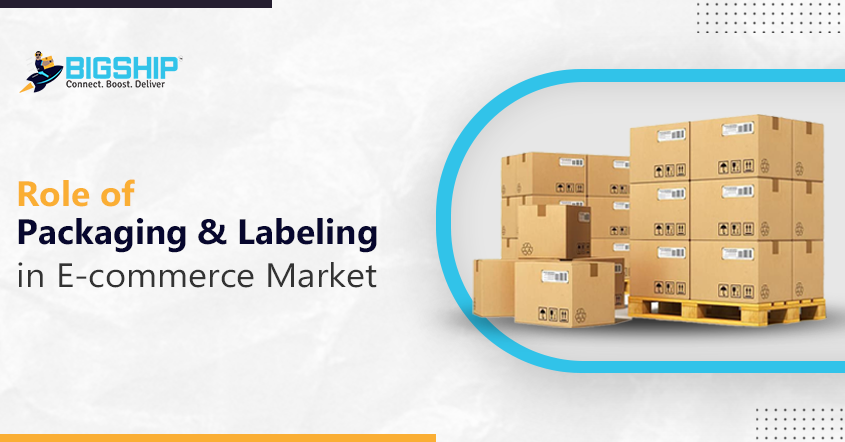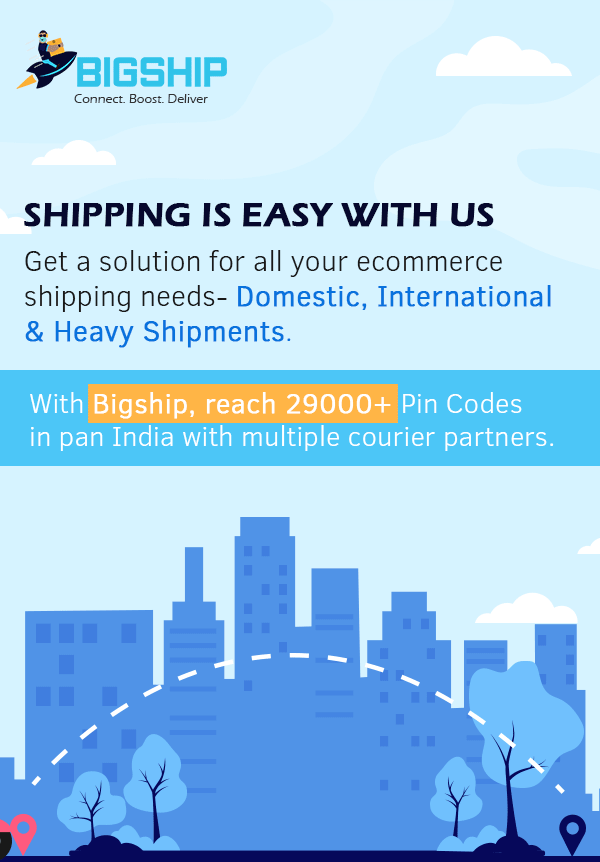Role of Packaging & Labeling in E-commerce Market

Contents:
2. Effective Packaging Reduces Cost
3. Effective Packaging & Labeling builds Brand Identity
4. Packaging Exceeds Beyond the Fundamental Utility
5. Conclusion
6. FAQs
In all kinds of business forms, the final product sent to the customer is valued the most. If the product reaches customers and does not provide them with any satisfaction then it can harm the reputation of the company’s future sales. But the rules shift when the market ways change and so do e-commerce businesses.
In the e-commerce business, the role of packaging becomes important. At this stage, customers only rely on packaging and labeling because they don’t have any tangible feel of the product in hand. That is why packaging has to be your top priority to ensure a safe reach of the products and leave your customers happy and satisfied.
Why Investing In Packaging is Crucial?
The rapid growth of e-commerce businesses over the past years has exceeded now. More and more people are investing in online businesses and people with traditional businesses are also shifting to e-commerce businesses to make their stand stronger in this competitive market. The main objective of these e-commerce businesses revolves around good packaging and labeling and they are investing their funds in these core areas.
By proper packaging and labeling, the brand is promoted which has a positive impact on an e-commerce business. It also ensures that the product reaches customers with safety and security with no damage. If customers are happy, it increases the recall value of the company, ultimately growing its business.
Effective Packaging Reduces Cost
Many e-commerce businesses ignore the fact that proper packaging leads to minimizing the company’s cost. Have you ever noticed why customers return their packages? Most of them are due to some damage. Whether you refund or provide them with a new product, in both scenarios the loss is yours. If you want packages to reach in the hands without any damage and in the right condition then investing in packaging can save you from many sides.
Effective Packaging & Labeling builds Brand Identity
For a brand, it is important to create a lasting impression on customers, especially through e-commerce business. One of the easiest ways of doing this is by focusing on packaging and labeling. A good packaging will always leave an indelible mark on the minds of costumers that will benefit the business. It is always your packaging and labeling that decides the impression of your business in the eyes of customers.
Labeling involves all the necessary customizations such as your logo, color scheme, brand name, internet profile, etc to help people identify your brand easily. It is important to note that you not only label your brand but also the other requirements regarding the product’s information of its expiry, delicacy, handling tips, etc to gain trust. This way your brand identity can be built among the competitors and add brand value to your business.
Packaging Exceeds Beyond the Fundamental Utility
Packaging isn’t just about functionality, it’s a way to build a strong market presence. It should be created to safeguard the product or the items stored in it. Packaging should be done by taking various measures. If the product is health-related then the packaging is done accordingly to set the right temperature. If a fragile item has to be delivered, packaging with bubble wrap and extra care is to be done.
Remember, if your packaging doesn’t meet the basic needs of the product, customers will notice the missing details rather than your impressive design. To promote your brand identity and value, it’s crucial to ensure all aspects of packaging are properly addressed.
Conclusion
The role of packaging and labeling in the e-commerce market is of great importance. It ensures product safety, enhances customer satisfaction, and builds a strong brand identity. Proper packaging minimizes costs by reducing returns due to damage, while effective labeling helps customers easily recognize and trust your brand.
As e-commerce continues to grow, investing in high-quality packaging and labeling is essential for standing out in a competitive market. By prioritizing these elements, businesses can create a lasting impression, foster customer loyalty, and ultimately drive growth and success in the digital marketplace.
Sign up with Bigship to ensure your products reach your customers with proper packaging and labeling.
FAQs:
Ques: How does good packaging impact reducing the cost in e-commerce?
Ans: Good packaging reduces costs in e-commerce by preventing product damage during shipping, which lowers the need for returns and replacements. It also optimizes space, allowing for more efficient storage and shipping, and reducing shipping costs. Additionally, high-quality packaging can enhance customer satisfaction by reducing complaints and improving brand reputation. This ultimately leads to repeat business and lower customer service costs.
Ques: What are the details to be mentioned on the product label?
Ans: A product label should include the product’s description, tracking number, details regarding the handling of the product, cautions (if necessary), brand logo and name, and seller’s or manufacturer’s details.
Ques: Why do fragile items require different packaging?
Ans: Fragile items have a high chance of breaking while in transit, hence they need special packaging. They require multiple layers of packaging, which include extra cushioning. The outermost layer should be made of strong material to protect the items inside from vibrations, ensuring that they arrive at their destination intact and undamaged.
Ques: What mistakes to avoid in labeling?
Ans: The list of mistakes to avoid while applying a label on a packed product is mentioned below.
- Inaccuracy in listing ingredients
- Misleading Claims
- Basic legal requirements
- Barcode mistakes
Ques: Are there any regulations and guidelines to label food items?
Ans: Yes, all prepackaged food sold in India must follow the Food Safety and Standards (Packaging and Labeling) Regulations, 2011. These labels ensure safety warnings, what nutrients are in, the ingredients, and if it has a food license.





